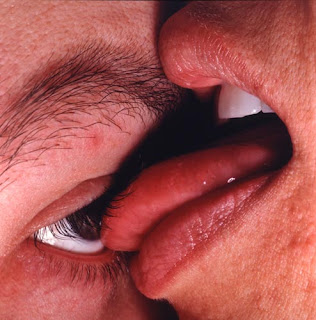Nov 5 Hugo Lee
BODY II - Kiki Smith & her Dark Cruse
1. What is Body Art?
1.Using the image of (or a part of ) human body. (e.g. symbol of human being)
2.Using the actual body as a tool to create artwork (e.g. as a brush)
3.Using the actual (or a part of ) human body as (or a part of ) the artwork.
2. Cartesian dualism (笛卡兒的二元論)& Abject aspect
Dualism(二元論) :
•two confronting elements in the world.
•such as dark & light, god & evil, paradise & hell, body & soul
Cartesian dualism :
•there are 2 worlds : material (物質,形以下) & spiritual (精神,形以上)
•‘body’(肉體) and ‘soul’(靈魂) form human
•so, humans appear in both material and spiritual world
•body follows the physics, but soul does not
Abject (pessimistic) aspect to Cartesian dualism :
•body is only a vase (or only a cheap container) of soul
•but our body is aging and being disappear one day
•our bodies force us to react, we are controlled by our bodies
•our body is ugly, it is just a machine without emotion
Features of Body art in expressing the abject aspect to Cartesian dualism :
•is direct related to the subject: Body is the simplest symbol – present & represent
(e.g. the indicator of toilet : M of F)
•creates sublime: concrete and powerful
(naked body with realistic presentation)
•demonstrates unfamiliarity (陌生化): rebirth of ordinary view forcing viewer to rethink
(e.g. saying ‘computer’ as ‘an aluminum box containing electronic components)
3.About Kiki Smith
Kiki Smith (Jan,1954)
•Famous American Feminist artist in 20th century
•Depicting the images of human body (especially female body)
•Showing the ugliness of the human appearance and organs
•Interested in life, death, natural, and the concept of rebirth in religion
4. Illustrate 3 of her art pieces

Digestive system, 1988
•Digestive system, was made by Kiki Smith in 1988.
•This artwork reminds that human body is only a machine. We do not have
any power to control our body. When we are hungry, we eat.
•She depicted the image of inner organs ans she used black colour to represent
the dirtiness of the human organs.
•It shows the abject perspective to human body of the artist. The dirty image of
human digestive system is demonstrating the ugliness of human body.

Untitled, 1992
•This art piece was done in 1992.
•She used the image of a female body with 2 deep scratchings at the back
of the sculpture.It is quite odd to see a wound without bleeding.
•It implies that it depicting a image death body instead of a live sculpture.
Question: What prove us we are live? Breath? Think?
•It shows the weakness of human body. You cannot spot any energy from
this art piece.

Born, 2002
•KiKi Smith created Born in 2002
•A deer is giving birth to a woman. It is obvious to know that deer gives
birth to deer and human gives birth to human.
•It discusses the issue about ‘the difference between human and animal’.
As perCartesian dualism, body is only a container, so what make the difference?
5. Discussion
1.Do you think our body is ugly and dirty?
2.Do you think Kiki Smith believes human body is more dirtier, or
the soul? (reflecting the dirty soul?)
6.Reference
Body Art and Performance: The Body As Language, Lea Vergine, (Skira, 2000)
Body Art/Performing the Subject, Amelia Jones, (University of Minnesota Press , 1998)
Kiki Smith: A Gathering: 1980-2005, Siri Engberg and Linda Nochlin, (Walker Art Center, 2005)
KIKI SMITH, Helaine Posner, (Monacell,2005)
Kiki Smith: Werke/Works 1988-1996, Kiki Smith and Thomas Baltrock, (Salon Verlag, 1998)

















































